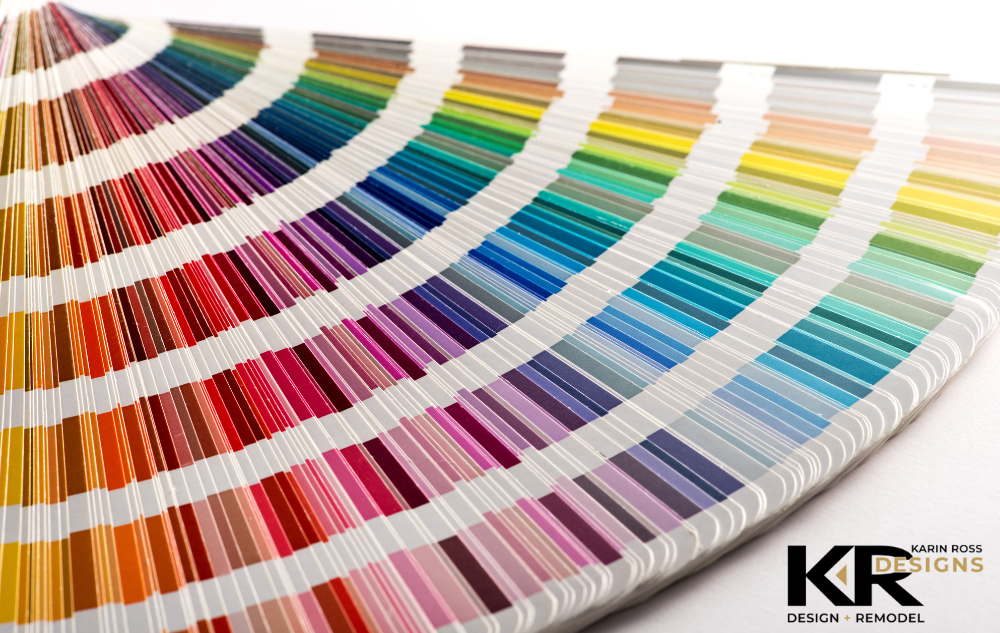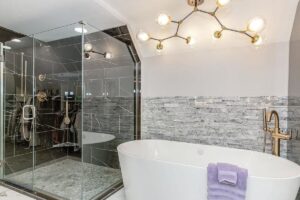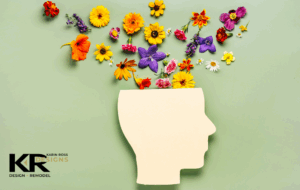Understanding Color Psychology in Interior Design
When it comes to creating a harmonious and functional living space, the colors you choose play a significant role in shaping the environment. Color psychology in interior design explores how different colors affect our mood, behavior, and overall well-being. At Karin Ross Designs, we understand how to use color strategically to enhance the aesthetic and atmosphere of a room, ensuring it aligns with your personal style and needs.
Whether you want to create a calming retreat in your bedroom or a lively and energetic atmosphere in your kitchen, understanding the psychological effects of color in interior design can help you make informed choices that will transform your space.
What Is Color Psychology in Interior Design?
Color psychology refers to the study of how colors influence human emotions and behavior. In interior design, this concept is used to select and apply colors that evoke the desired emotional response from the people who occupy the space. For example, soft blues and greens are often used to promote relaxation and tranquility, while bold reds and oranges can increase energy and excitement.
Incorporating color psychology into interior design and color decisions can make a significant impact on how a space feels and functions. Whether you’re remodeling a kitchen, bathroom, or living room, the right color palette can create an environment that feels welcoming, calming, energizing, or whatever best suits your needs.
How Colors Influence Our Emotions
Colors have the power to evoke specific emotions. For example, the psychology of colors tells us that:
- Blue is often associated with calmness, trust, and serenity, making it a popular choice for bedrooms and bathrooms.
- Red is a color that stimulates energy, passion, and excitement, which is why it’s often used in kitchens and dining rooms to encourage appetite and conversation.
- Yellow is uplifting and associated with happiness and creativity, making it perfect for spaces like home offices or playrooms.
- Green is known for its calming effects and connection to nature, making it ideal for living rooms, bedrooms, or anywhere you want a sense of peace and balance.
Understanding the psychological effects of color in interior design allows you to create a space that enhances your mood and supports the activities that happen there.
The Psychology of Color in Design
The application of color psychology in design goes beyond just selecting colors. It’s about creating the right atmosphere and aligning with the function of the space. Whether you’re designing a cozy living room or a vibrant kitchen, color choices can either elevate or detract from the overall design.
For example, if you have a space with limited natural light, color and light in interior design can play a critical role in brightening up the area. Lighter shades of color and interior design can reflect more light, making the space feel larger and more open. On the other hand, darker tones can create a cozy and intimate environment but may make the space feel smaller.
Color theory and interior design go hand in hand. By following principles like complementary and analogous colors, you can create visually balanced spaces that feel harmonious and inviting. The key is choosing colors that work with the space’s size, function, and the overall mood you want to create.
How Color Psychology Works
Color psychology works by influencing human emotions and behavior through the strategic use of color. Colors can subconsciously affect our feelings, energy levels, and even productivity. For instance, if you want to feel more productive, using stimulating colors like orange or yellow in your home office can help boost your energy. Alternatively, if you’re looking to relax, shades of blue or green may be better suited for your bedroom or living room.
It’s important to consider the context in which a color is used. For example, a color and design transforming interior space can be achieved by using soft, neutral tones to make a small room feel more spacious or using darker hues to create intimacy in a larger area.
Incorporating the right colors into your home’s design affects not only how you feel in that space but also how you interact with it. A well-chosen color palette can foster a sense of balance and well-being, contributing to a more positive living experience.
Practical Application of Color Psychology in Interior Design
Applying color psychology to your interior design choices can help you create spaces that truly reflect your personality while supporting your needs. Whether you’re designing a kitchen, a bathroom, or a living room, understanding the effects of color is essential.
For example, in the kitchen, you might want to use bright, energetic colors like red or yellow to encourage appetite and socializing. In bedrooms, cooler colors like blues and greens can help promote relaxation and restfulness. Color and interior design can be customized for every room to help you achieve the atmosphere you desire.
When it comes to larger spaces, such as living rooms or open-plan areas, choosing color and light in interior design is particularly important. Bright, reflective colors can open up a space, while deeper, richer tones can create a sense of coziness.
Frequently Asked Questions
What is color psychology?
Color psychology is the study of how colors influence human emotions, behaviors, and decision-making. This knowledge is used to create environments that support a particular atmosphere or goal.
What is color psychology in interior design?
Color psychology in interior design refers to the use of color to create a specific emotional response or mood in a space. By understanding how different colors affect us, designers can select the perfect palette for any room.
How does color psychology work?
Color psychology works by influencing our emotions and behaviors through visual cues. The right colors in a space can impact our mood, productivity, and even our sense of comfort.
Do colors have psychological effects on us?
Yes, colors can have profound psychological effects. Different colors evoke different emotions, such as calmness, excitement, or warmth, and can influence our moods and behavior.
How do we perceive color psychology?
We perceive color psychology through both cultural and personal associations with colors. For example, the color blue is often linked to calmness, while red may be associated with passion or urgency.
Transform Your Space With Color
At Karin Ross Designs, we understand how powerful color can be in shaping a space. Whether you’re renovating a bathroom, kitchen, or any other area in your home, we can help you incorporate color psychology to create an environment that enhances your life and reflects your style.
Schedule a remodeling consultation with us today to explore how color psychology can transform your space, making it more inviting, functional, and truly your own.










